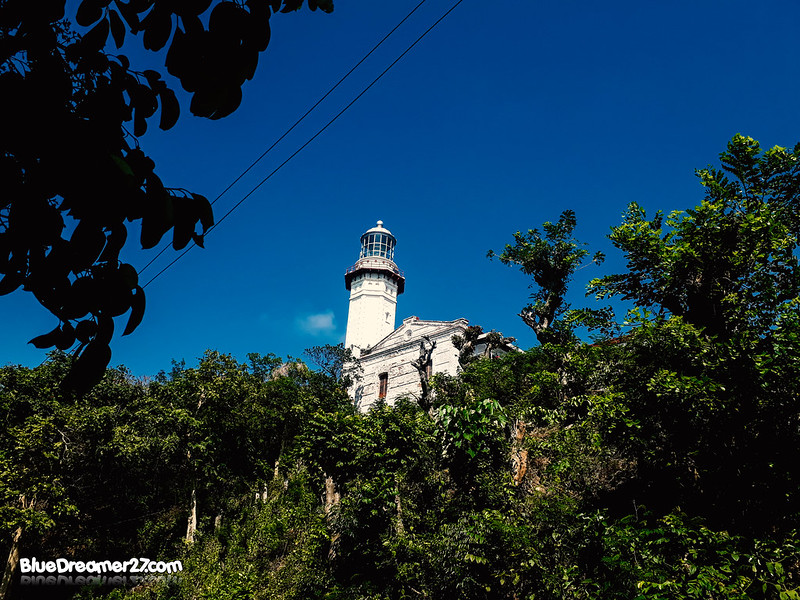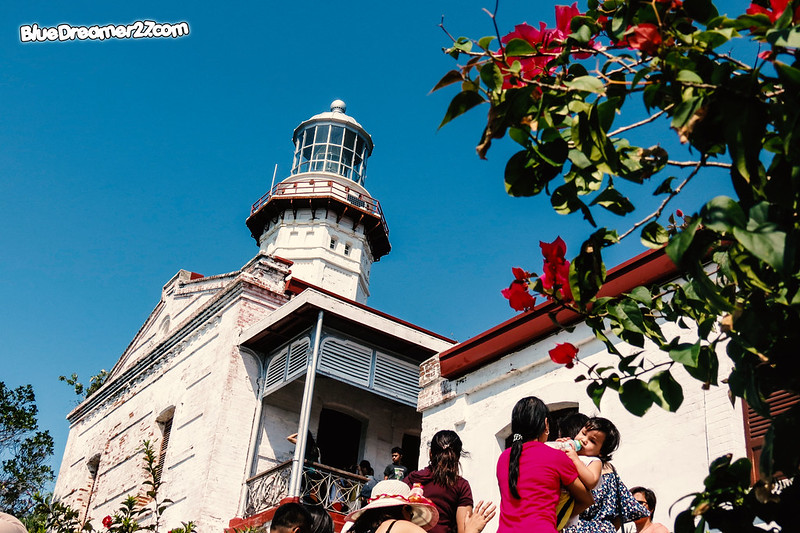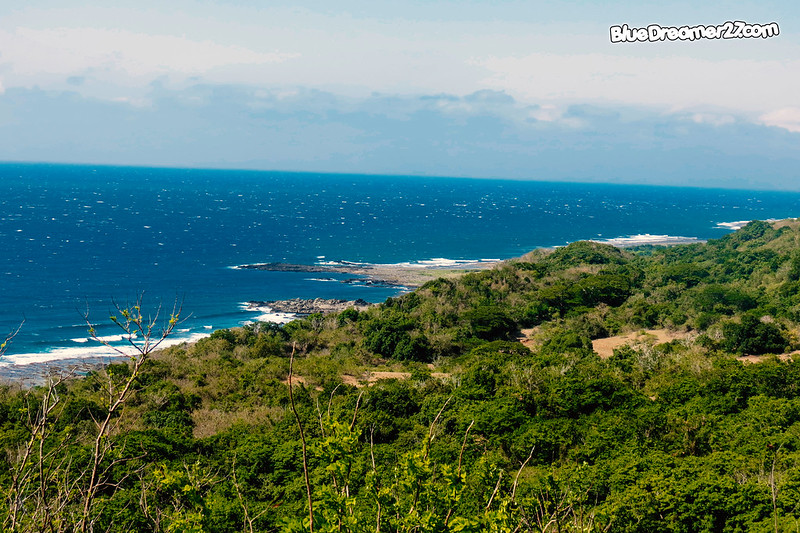Exploring Ilocos : The Cape Bojeador Lighthouse
It didn’t take us long to reach our next destination in Ilocos Norte. We’ve finally entered Burgos and before we get the chance to see the Kapurpurawan Rock Formation, we had a quick stop over to one of the most notable places in Ilocos Norte ~ The Cape Bojeador Lighthouse. Lighthouses never failed to amuse me as they offer this unique picture-worthy atmosphere and a refreshing scenery that you can simply marvel. The Parola in Tanay Rizal and the Lighthouse in Sisiman Mariveles were both equally stunning but the Cape Bojeador Lighthouse is something really special.

The Cape Bojeador is perfect example of a well maintained and well preserved piece of architecture. It was first lit on March 30 1892 and interestingly, it is still functional and the place is still standing strong! For nearly 125 years, this century-old Spanish lighthouse has witnessed numerous events in Philippine history. The lighthouse is built on top of the Vigia de Nagpartian Hill where it overlooks the Cape Bojeador ( the northwestern tip of the island of Luzon ). This is where the early galleons during the Spanish period used to sail by.
 Since I was accompanied by elders who were all exhausted after the recent trip to Malacañang of the North and none of them seemingly had enough energy to climb the series of stairs going to the lighthouse, I decided to enter the place alone despite the fact that I’ve heard a lot of ghost stories about the Cape Bojeador. It’s freaking day time after all hahaha. I also like to note that the parking lot is quite far from the actual building where the Lighthouse is erected but you can ride a tricycle for Php10 per head. A tricycle can carry up to 3 passengers but if you got enough stamina, you can actually walk from the parking lot to the lighthouse.
Since I was accompanied by elders who were all exhausted after the recent trip to Malacañang of the North and none of them seemingly had enough energy to climb the series of stairs going to the lighthouse, I decided to enter the place alone despite the fact that I’ve heard a lot of ghost stories about the Cape Bojeador. It’s freaking day time after all hahaha. I also like to note that the parking lot is quite far from the actual building where the Lighthouse is erected but you can ride a tricycle for Php10 per head. A tricycle can carry up to 3 passengers but if you got enough stamina, you can actually walk from the parking lot to the lighthouse.

You need to pass through a long flight of stairs before reaching the main exit. It is very important to note that there is an admission/entrance fee to Cape Bojeador Lighthouse. You can access the building for Php20 (adults and kids share the same rate).
 The place is seemingly well maintained and you can see the Spanish inspired designs all over the place. The whitewashed brick walls are adorned with red paints and roofs which are perfectly complimenting to each other. Before you can reach the actual lighthouse, you will pass through a series of rooms and galleries that showcase different well preserved furniture from the late 19th century and early 20th century. It also features some parts and apparatus from the old lighthouse.
The place is seemingly well maintained and you can see the Spanish inspired designs all over the place. The whitewashed brick walls are adorned with red paints and roofs which are perfectly complimenting to each other. Before you can reach the actual lighthouse, you will pass through a series of rooms and galleries that showcase different well preserved furniture from the late 19th century and early 20th century. It also features some parts and apparatus from the old lighthouse.
 The stairs as viewed from the corridor
The stairs as viewed from the corridor
 The picture worthy corridor overlooking the Cape Bojeador (a glimpse to the West Philippine Sea)
The picture worthy corridor overlooking the Cape Bojeador (a glimpse to the West Philippine Sea)
 Old pressure vessels for the light house. The original mechanisms and parts of the lighthouse were still functional during 70s but they were greatly damaged by the earthquake the shook the region in 1990. The original lens (fresnel lens) and other parts are no longer operable. The beam now comes from a modern electric lamp that is powered by solar panels.
Old pressure vessels for the light house. The original mechanisms and parts of the lighthouse were still functional during 70s but they were greatly damaged by the earthquake the shook the region in 1990. The original lens (fresnel lens) and other parts are no longer operable. The beam now comes from a modern electric lamp that is powered by solar panels.

A piece from the First order Fresnel Lens
 An old gauging apparatus on display.
An old gauging apparatus on display.
 A picture showing the construction of the Cape Bojeador Lighthouse in 1890s. The lighthouse was first designed by Magin Pers y Pers in 1887 and was finished by the Lighthouse Service under Guillermo Brockman. It is a typical Spanish Lighthouse which is built in masonry made with bricks.
A picture showing the construction of the Cape Bojeador Lighthouse in 1890s. The lighthouse was first designed by Magin Pers y Pers in 1887 and was finished by the Lighthouse Service under Guillermo Brockman. It is a typical Spanish Lighthouse which is built in masonry made with bricks.
 Aside from the apparatus from the old lighthouse lens, you will also witness some old furniture in some of its gallery. They look kind creepy though.
Aside from the apparatus from the old lighthouse lens, you will also witness some old furniture in some of its gallery. They look kind creepy though.





The 66-foot-tall (20 m) octagonal stone tower. It is not the highest-elevated nor tallest lighthouse in the Philippines but the highest elevated still original and active Spanish era lighthouse in the country. The octagonal tower is topped with a bronze cupola surrounded by glass panes. Unlike before, the tower is no longer publicly accessible. The door that leads to the lighthouse has a High Voltage sign which prohibits the visitors to enter.
 The scenic lighthouse of Cape Bojeador
The scenic lighthouse of Cape Bojeador
 The West Philippine sea (Cape Bojeador). Because of the place’s huge historical significance, Cape Bojeador Lighthouse was declared a National Historical Landmark on August 13, 2004 and a National Cultural Treasure on June 20, 2005 by the Philippine Government.
The West Philippine sea (Cape Bojeador). Because of the place’s huge historical significance, Cape Bojeador Lighthouse was declared a National Historical Landmark on August 13, 2004 and a National Cultural Treasure on June 20, 2005 by the Philippine Government.


Things You Should Know Before Visiting the Cape Bojeador Lighthouse
►The Cape Bojeador Lighthouse was first lit in March 30, 1892 making it 125 years old already
►Despite being over century old, the lighthouse is still functional but now using modern electric lamp
►It is the highest elevated still original and active Spanish era lighthouse in the country
►The entrance fee to Cape Bojeador Lighthouse is Php20 for both kids and adults
►The building houses various galleries of old apparatus and furniture from the late 19th century
►Although features a refreshing ambiance of the Burgos coastline, it could be extremely hot so make sure to bring some protection like caps or umbrella.

Where to Stay In Ilocos
►A day is actually not enough to explore the entire Ilocos Norte. Paoay Sand dunes and other notable destinations in Paoay are just few of the most interesting places to visit in Ilocos Norte. You can check this list of affordable hotels in Ilocos Norte and check which one will suit your needs and your budget!

For the mean time, feel free to watch the video summary of my Ilocos tour below (and don’t forget to subscribe
Also follow me in my social media accounts for more updates
Facebook : It’s Me Bluedreamer!
Instagram : @bluedreamer1227
Twitter : @bluedreamer_27




Looking at all the places where one could go to in the Philippines, and considering that I have been to many places already, the evidence of three centuries as a colony of Spain remains. Having said that, with all the lighthouses and churches we have, stepping into one is almost like stepping into Spain. I have seen how they market their 100 or 200-years old structures, how about ours built in the 15th to 16th century?
Anyway, I like your post because it showed me another side of Ilocos Norte. I may have been around, but I am too lazy to go to destinations, preferring instead to stay in a resort. So, seeing your post, it makes me understand the loss of opportunity if I was more eager in exploring.
It is a magnificent lighthouse. A pity they don’t build those kinds any more and the existing ones have turned to museums. That it belongs to Spanish era makes it more interesting.
I have visited a couple of them here. Those furniture looks so grand!
Wow! When I first saw the images I didn’t realise this was in the Philippines, nor did I realise the Philippines had Spanish colonies! Goes to show that you learn something new every day! 🙂
Your photos look great! Keep up the incredible work!
This is the time that I will tell you to take me with you in your next travels! Hahaha! But seriously though, I think your taste in traveling is similar to mine. Well, I do love going to places like this one because it educates and also enlightens us (your audience) about the history (and possibly, folklore) of the place. Ilocos is just one of the richest places when it comes to history. ?
Keep on traveling!
I’ve been thinking of going to Ilocos once we had a vacation but I am thinking if it’s really worth the travel. We had a 1yr old baby and I always make it a point to see if the place (and the travel) is child friendly. The place looks really cool but I am not sure if it’s still the same with the baby. I guess the tour with be more difficult if it’s there’s island hopping in the itinerary. i think I need to learn to settle on land travel first.
Would you believe it when I tell you than in my over two decades of existence in this world, I have never seen a lighthouse before? Well, I think I have never seen one. Or maybe I have seen one but it didn’t leave an impression on me. Maybe it’s not as valuable and as beautiful as the Cape Bojeador Lighthouse. 🙂
Light houses also have the same effect on me. I like the fact that they were built to be a beacon – guide those travelers. They stand majestically and are so beautiful to look at.
I’ve been to Ilocos a couple of years ago, but we literally just went pass by the region. We drove from Apayao to Abra taking the North loop, (Cagayan Valley to Apari to Ilocos) but didn’t have time to stop at any Ilocos attractions. Only saw the lighthouse from a far. Your post makes me want to go to Ilocos now! 😛
What a fun trip! I’d love to go there and see this in person… There’s something about lighthouses that I love. There just seems to be so much history in each one. I go every summer to Northern MN and see the lighthouses and take a gazillion photos of them while breathing in the fresh air. It’s amazing!
Maybe some day I can venture that way and look at those stunning views you captured through your photos.
As a child I wanted to work in a lighthouse 😀 There was something luring in an idea of spending the time alone surrounded by the sea. Luckily I have never realized those dreams because they do not look that nice anymore. It sad though that most of the lighthouses are not operating anymore. It is great that this one was turned into a museum so it is still alive in a way.
I haven’t seen that many lighthouses in my lifetime (I think the only one I’ve ever seen is the one at The Greenery in Bulacan!) so it’s good to know that the Cape Bojeador Lighthouse is there for people like me to see and appreciate. It’s great that they have preserved its beauty after almost 125 years! Wow! There must be something so special about it that it has been taken care of very well. And it’s so cheap to see it too! PHP 20 is not bad at all!
This lighthouse looks really magical.Tanks for sharing the photos of old pressure vessels for the light house,these are really nice to see showing bit of history.I like the furniture in this place,really beautiful antiques.Hope you enjoyed the day although it is a long way to climb till the top…